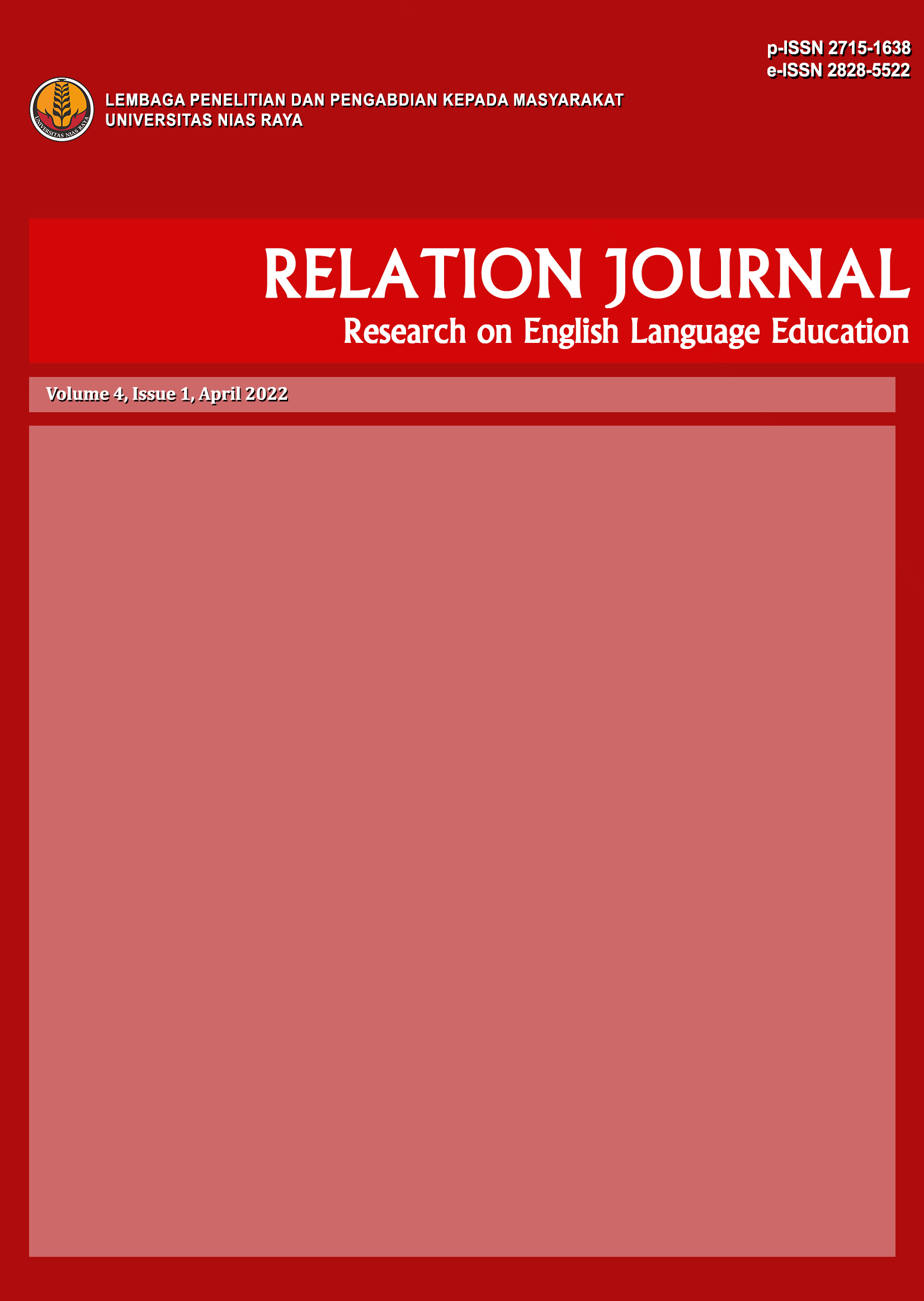AN ANALYSIS OF CONNOTATIVE MEANING IN LINKIN PARK “A THOUSAND SUNS ALBUM”
Abstract
This research aimed to analyze the connotative meaning and the type of connotative meaning found in the twelve lyrics of linkin parks’s songs. This research is designed in qualitative research with descriptive approach. The source of this research is the twelve lyrics of linkin park’s songs. The data is analyzed by using the technique of the data analysis: data condensation, data display, drawing and verifying conclusions. The result of data analysis shows that: there are 30 connotative meaning used in the twelve lyrics and the dominant types of connotative meaning is associative meaning. Besides, it is found 16 associative meaning, 4 allusive meaning, 3 collocative meaning, 7 affective meaning, 0 reflective meaning and attitudional meaning. Based on the finding, it is concluded that the connotative meaning found is carried within words, phrase and sentences in twelve lyrics of linkin parks’s song. In this research, the researcher also wants to suggest the lecturer or the English teacher to lead the students’ use the connotative meaning theory as the material of teaching and learning and also can be implemented as material for increasing the students’ ability in mastering the vocabullary and also connotative meaning material can be propossed to extend students ability in recognizing the meaning of words not only which has provided in dictionary but also which has associated in another aspect.
References
Chandler, Daniel 2007. The Basis Semiotic. (2ndEd). London and New York:Routledge
Chaer, Abdul 2012. Linguistik Umum. Edisi Revisi. Jakarta: PT.Rhineka Cipta
Dickins, James. 2019. Discourse in Translation. (1st Ed).New York: Routledge
Dickins, J. Hervey S. and Higgins I. 2017.Thinking Arabic Translation. (2ndEd).New York: Routledge
Hervey S, Loughbridge M and Higgins I. 2006. German Translation A Course in Translation Method: German To English. (2nd Ed). New York: Routledge
Hurford J.R, Heasley B and Smith M.B 2007. Semantics a Coursebook. (2nd Ed).New York:Cambridge University Press
Brinton L.J and Brinton D.M 2010. The Linguistic Structure of Modern English. Amsterdam:University of Southern California
Kielmann, Cataldo and Seeley. 2012. Introduction to Qualitative Research a Training Manual. Seotland: Institute for International Health & Development Queen Margaret University
Kreidler, Charles W 1998. Inroducing English Semantics.(1stEd). London: Routledge
Leech, Geofrey 1981. Semantics The Study of Meaning. (2nd Ed). New York:Penguin Books
Lincoln, Yvonna S and Guba, Egon G. 2013. The Constructivist Credo. California: Left Coast Press
Lyons, Jhon 1981. Language And Linguistics An Introduction.New York: Cambridge University Press
Miles, Huberman and Saldana 2014. Qualitative Data Analysis:A Methods Sourcebook. Third Edition. America: United states USA” SAGE
Walliman, N. 2011. Research Methods The Basics. New York: Routledge
You are free to:
- Share — copy and redistribute the material in any medium or format for any purpose, even commercially.
- Adapt — remix, transform, and build upon the material for any purpose, even commercially.
- The licensor cannot revoke these freedoms as long as you follow the license terms.
Under the following terms:
- Attribution - You must give appropriate credit , provide a link to the license, and indicate if changes were made . You may do so in any reasonable manner, but not in any way that suggests the licensor endorses you or your use.
- No additional restrictions - You may not apply legal terms or technological measures that legally restrict others from doing anything the license permits.
Notices:
- You do not have to comply with the license for elements of the material in the public domain or where your use is permitted by an applicable exception or limitation.
- No warranties are given. The license may not give you all of the permissions necessary for your intended use. For example, other rights such as publicity, privacy, or moral rights may limit how you use the material.









